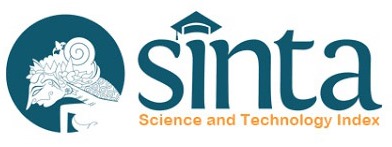Biosynthesis and Cytotoxic Activity of In Vitro Expressed Scygonadin Protein
Abstract
Antimicrobial peptides (AMP) are key components of an innate immune response which represent immediate action of the defence mechanism of an organism. It is considered a novel therapeutic agent due to its abundance in nature and a broad range of defence activity against microbial. Preceding research has shown that scygonadin AMPs isolated from seminal plasma of mud crab had the potential as a novel antimicrobial agent. However, its cytotoxicity properties on cultured cells have never been experimentally addressed. In this study, the scygonadin protein was expressed in vitro, followed by cytotoxicity assessment via MTT (3-(4,5-dimethylthiazol-2-yl)-2,5-diphenyltetrazolium bromide) assay. A full-length sequence of the scygonadin gene of 387 bp was cloned into pBAD/Myc-His A vector and expressed in TOP10 cells. The protein expression was induced, purified and quantified before being subjected to cytotoxicity analysis. Next, an African green monkey kidney (Vero) cell was chosen to evaluate the cytotoxicity level of scygonadin in vitro. A total of 1x104 cells/mL were seeded into a 96-well plate before being treated to various concentrations of scygonadin protein and hydrogen peroxide as a positive control for the toxicity test. The cells’ viability treated with scygonadin AMP and hydrogen peroxide was also verified with fluorescent analysis. The result demonstrated that the scygonadin did not cause any cytotoxicity effects while hydrogen peroxide showed an IC50 value at 0.003mM and this was further confirmed by fluorescent staining analysis. The absence of scygonadin toxicity in cells indicates its potential for biopharmaceutical use.
Keywords
Full Text:
PDFDOI: https://doi.org/10.15578/squalen.699
Article Metrics
 PDF Download: 55
PDF Download: 55
Refbacks
- There are currently no refbacks.
ISSN : 2089-5690(print), E-ISSN : 2406-9272(online)
This work is licensed under a Creative Commons Attribution-NonCommercial-ShareAlike 4.0 International License.








